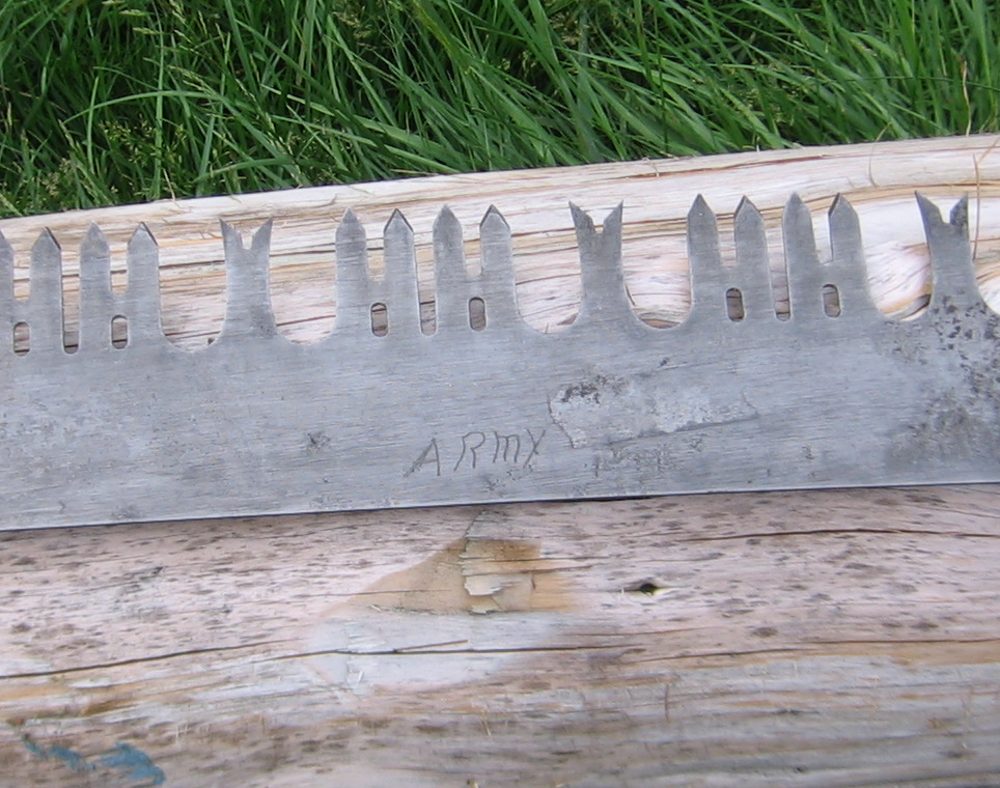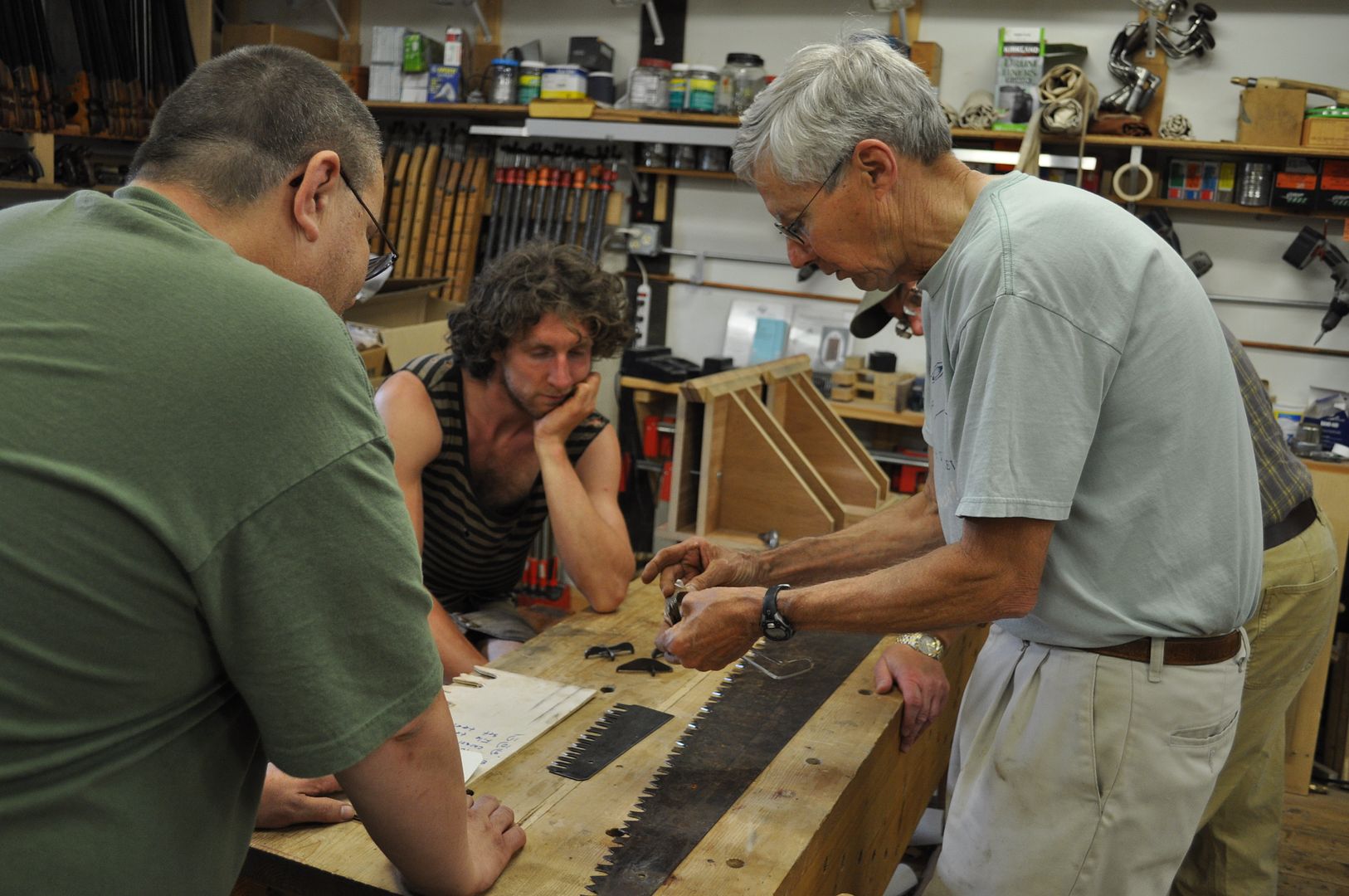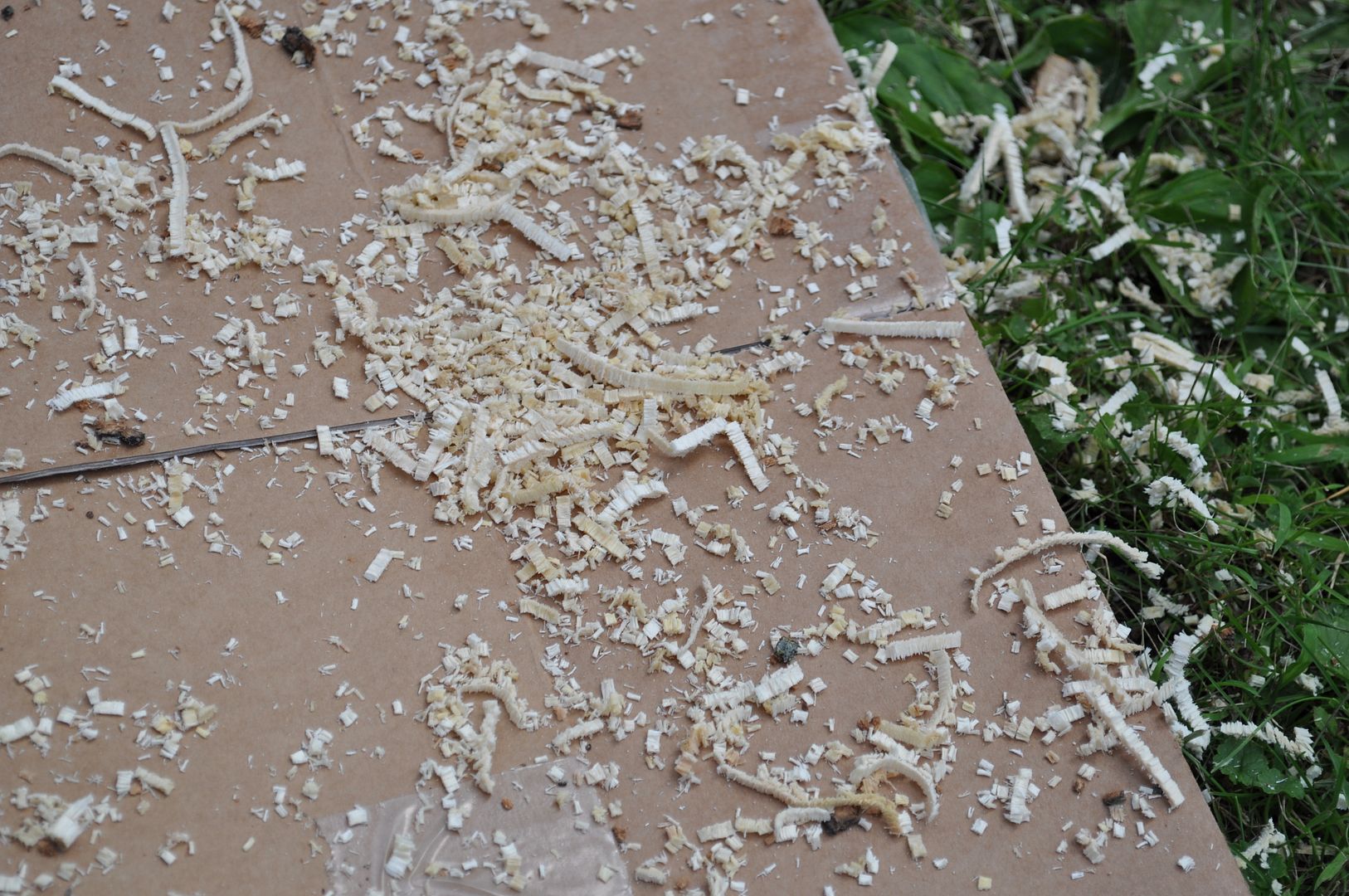here are a couple i have collected over the last couple years. both found locally, and both in pretty poor condition when found. took a lot of careful sanding to get them back into "condition"
here is the perfed lance tooth two manner. no identifiable markings when i found it, but after a few hours cleaning off the crust and rust, a blue, swooped and underlined "craftsman" logo appeared, none of the other info is legible. havent yet measured its OAL, but its about 60". needed a true filing, , no jointing really. teeth were all intact. made a crude raker measuring device and used feeler gauges to get it close. it cuts decently well on softer species, makes noodles, although they are all less than an inch, and most less than 1/2 inch long... at least its not dust!!
needs a true filing and set. i noticed that the steel is not super hard, but i cant compare to others as i have not put a file to any others than these two. its files easily though, but seems to keep its edges. the very dry log used for the photos had a couple conveniently placed kerfs to hold the saws for the photos :thumbup:


this is my champion tooth one man, which appears to actually be a piece of a two man bucking saw. when i removed the handles it seems to have a cut edge, but the screw holes seem to be well made, so its up in the air. this saw has no identifiable markings or logos, so i am clueless on its pedigree. the handle screws are all matching Disstons. seems to be made of better steel than the craftsman, its harder to file, but still fairly easy to remove material. much softer than "hard" ax bits. the teeth were mostly intact, and needed very little jointing, but was very dull. i touched it up best i could with my home made contraptions and got it noodling pretty dang well for an amateur.. not measured, but its about 36" OAL. i want to find a 4ft or larger one man, as this one takes a bit of effort to keep cutting well, too light in weight to do its own work... all three vertical handles(both saws) were lightly sanded to clean them up, but naturally very dark from years of aging. all i did was heat them in the sun for 20 mins or so on a warm day, and hit them with a heavy coat of paste wax, let cool, wiped off excess and buffed them up. they turned out beautifully. the end handle seems more contemporary, laminated, and of "economy" quality it seems to me. heavily sanded and heated in sun and waxed, same as above.
























